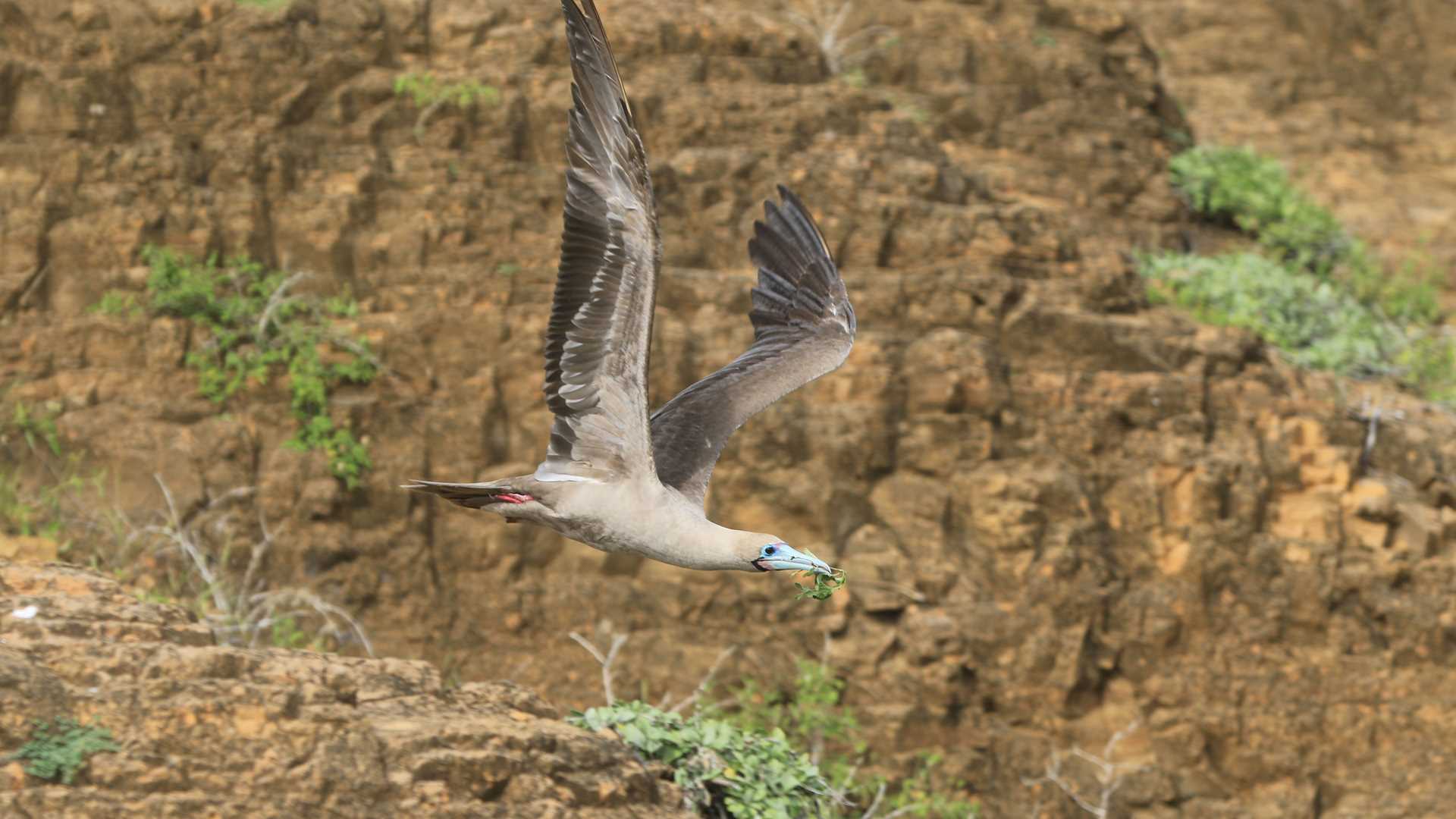I grew up with this rather romantic idea of living on a boat: people walking with eye patches and singing maritime songs. By now, I have spent half of my life onboard ships, and I have only dressed like a pirate when crossing the equator. However, the traditions are many and the experiences always rewarding and meaningful. Today, two hundred dolphins showed up precisely when we were about to start disembarkation. We took off after them to watch their different behaviors from the Zodiacs. They jumped, swam towards us, played, and rode the bow. They carried out all of their regular dolphin performances. Before we even started our official outing, we enjoyed one of the highlights of the entire week.
Punta Pitt was painted its regular brownish tuff hue, but thanks to the rain, we spotted green patches of Lecocarpus and Nolanas. Along the trails, a few red-footed boobies roosted on the branches of Cordias and Burseras.
Global Explorers learned to drive the Zodiacs, and most guests snorkeled among parrotfish and rays. It was a sweet morning. The afternoon found us at Cerro Brujo, offering a recapitulation of what we saw throughout the week, from sea lions to marine iguanas. Tomorrow, we will see giant tortoises at Santa Cruz Island. Galapagos will be in our hearts forever!







